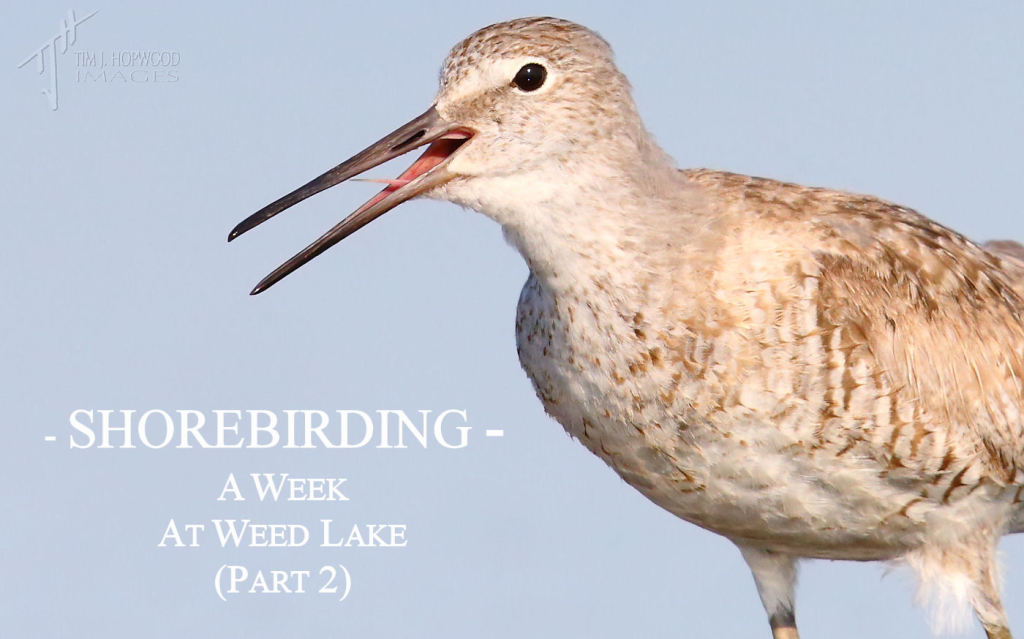 As I mentioned in last month’s post, in 2014 I made a concerted effort to see and photograph shorebirds on their fall migration as the birds headed south and stopped over at Weed Lake, just east of Calgary.
As I mentioned in last month’s post, in 2014 I made a concerted effort to see and photograph shorebirds on their fall migration as the birds headed south and stopped over at Weed Lake, just east of Calgary.
While last month’s post focused on the sandpiper family, Part 2 of that post – this post – shows a sample of some of the plovers, stilts, avocets and other shorebirds I photographed at Weed Lake over the last weekend in July and first weekend in August.
American Avocets have always been a favourite species of mine and I think it has something to do with their delicate features – the slender upturned bill, long blue legs and attractive plumage. As it was fall, some of the avocets were molting into basic plumage, but they were still nonetheless a very photogenic bird.
Black-necked Stilts were also present in good numbers, with a notable number of immature birds – positive signs of a successful breeding season. Indeed, apparently breeding Stilts in the Calgary area were quite rare up until the last 20 years.
I find that stilts are like the ‘guard dogs’ of shorebirds – once they see you, they will yap away incessantly until you leave and this can go on for five minutes or more and almost always it’s me who quits the area first just to get a break!
Marbled Godwits were also busy puncturing the mudflats in their quest for a meal and were quite happy to plunge their whole head under the water to find a tasty snack.
Another group of shorebirds that were plying the shallow waters just offshore were Short-billed Dowitchers still largely retaining their rusty orange alternate breeding plumage. I still haven’t quite nailed down how to tell Short-billed from Long-billed Dowitchers, so please feel free to correct me if my ID is not correct!
Willets are also fairly common and about the size of an avocet and in my experience also they tend to share some that ‘guard dog’ habits of stilts – once they see you they’ll let you know!
One of the personal highlights of these shorebirding weekends was the opportunity to shoot two members of the plover family – the Black-bellied and Semi-palmated:
The larger of the two, the Black-bellied Plover, tended to be a fairly solitary bird and would patrol up and down a stretch of lakeshore, moving in fits and spurts and pausing in between to keep a wary eye on its surroundings.
The much smaller Semi-palmated Plover is like a smaller version of its cousin, the Killdeer. I saw these little plovers at various time, both as flocks and individuals. In each case, they were very skittish and would depart the area at the slightest alarm.
Which brings me to my few key tips for shorebird photography – all shorebirds are fairly wary, although it varies between species. Some will tolerate you at a distance you can get decent shots from (e.g. avocets) while others are unlikely to let you get near them if they know you are there – such as the aforementioned Semi-palmated Plover. So, I find it always pays to firstly scope out the general area with a pair of binoculars and determine what shorebirds are in the area, then slowly approach a spot where the birds will be in shooting range. This might take a few minutes, and it pays to pause – to let the birds get used to you – before advancing a little closer. Patience is key!
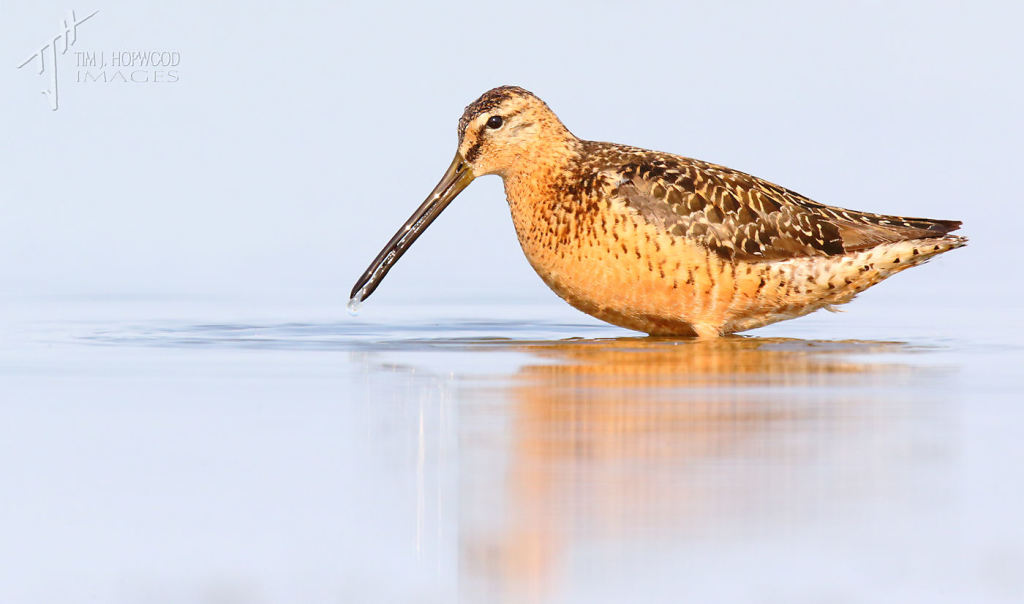
A Short-billed Dowitcher – shot from almost ground level, hence a completely out-of-focus background.
Some birds just will not let you get close if they know you’re there, so this is when a blind or otherwise concealed shooting position helps. This technique relies on finding a spot which you think will be attractive to shorebirds (a good spot is where you saw them feeding just before they saw you & flew off!), setting up & waiting for them to come to you. I’ve stayed in the same spot for 60-90 minutes and have seen all sorts of shorebirds come and go – half the fun is waiting to see what will turn up! Personally, I prefer to lie down behind some shoreline vegetation for concealment and wait. This achieves two things: one, I’m somewhat camouflaged so the birds hopefully won’t detect my presence; and two: shooting at ground level you can achieve nice out-of-focus backgrounds that draw the viewer’s eyes to your subject – the shorebird.
As for gear, I recommend the longest lens you have. Personally, when shooting birds I use a full-frame Canon 1Dx DSLR couple with a Canon f4L ISII 600mm lens with a 1.4x teleconverter 90% of the time. But when it comes to shorebirds and their inherent skittishness, I will use a 2x teleconverter (which gets me a focal length of 2 x 600mm = 1200mm) more than half the time. With all that glass you need good light and high ISO to get sharp shots, and I’ve found my sharpest shots are when I stop down to f11 or f13 (I normally shoot at f5.6 for any other birds).
But be warned: shooting lying down for extended periods is definitely not for everyone. Be prepared for a stick neck/upper body afterwards, to literally ‘get down and dirty’ in the mud, and to also meet all sorts of creepy-crawlies (flies, midges, mosquitoes, spiders, hairy caterpillars, etc) in an up close and personal environment! To prepare myself, I try & do a little neck stretching in advance, wear a water-proof coat and pants and spray a bit of repellent on my cap. But at the end of the day, to get a quality shot it’s usually going to be a case of ‘no pain, no gain’! That said, when you land a killer image all the mud, bugs and pain seem to just disappear from your mind replaced by the satisfaction of nailing a great shot. And that’s the feeling that keeps me coming back for more!
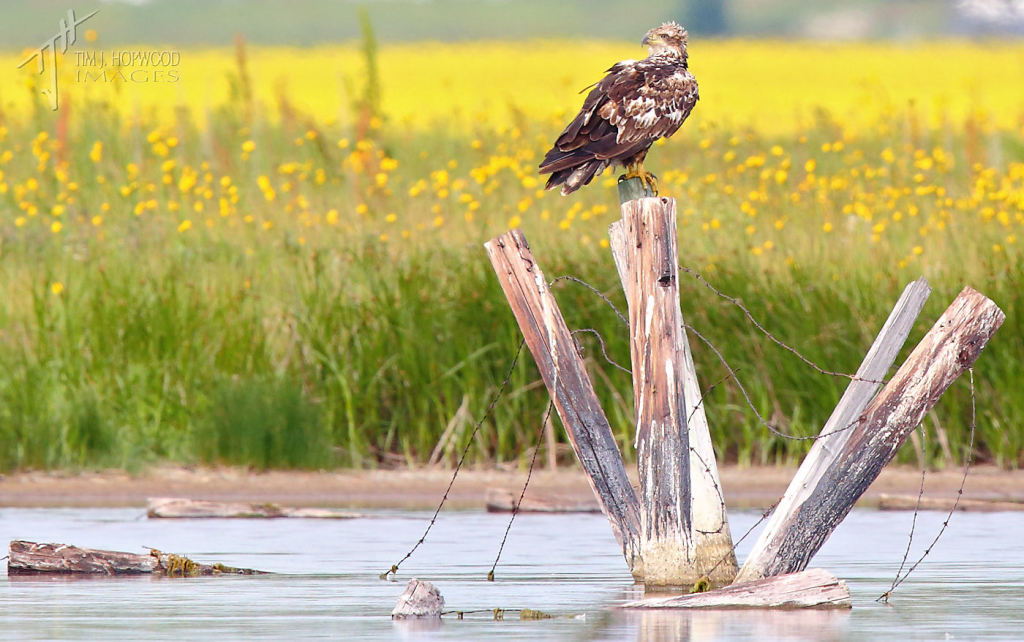
Not a shorebird, but this Bald Eagle certainly made them scatter when it paid a brief visit to the lake!



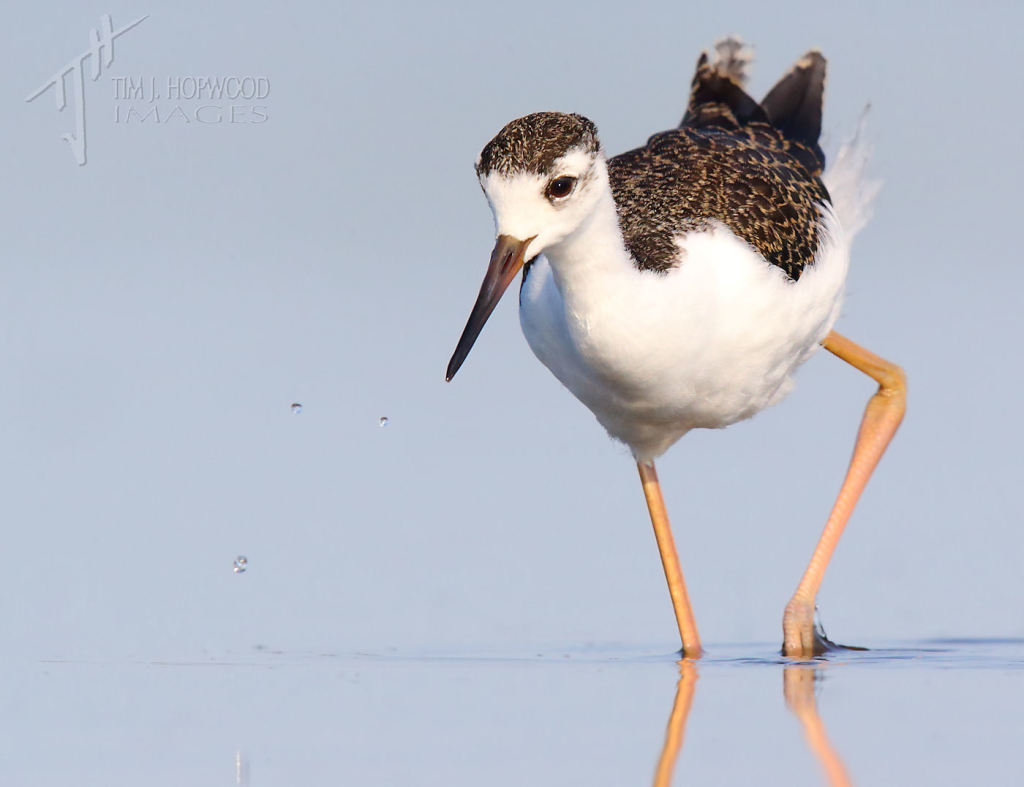
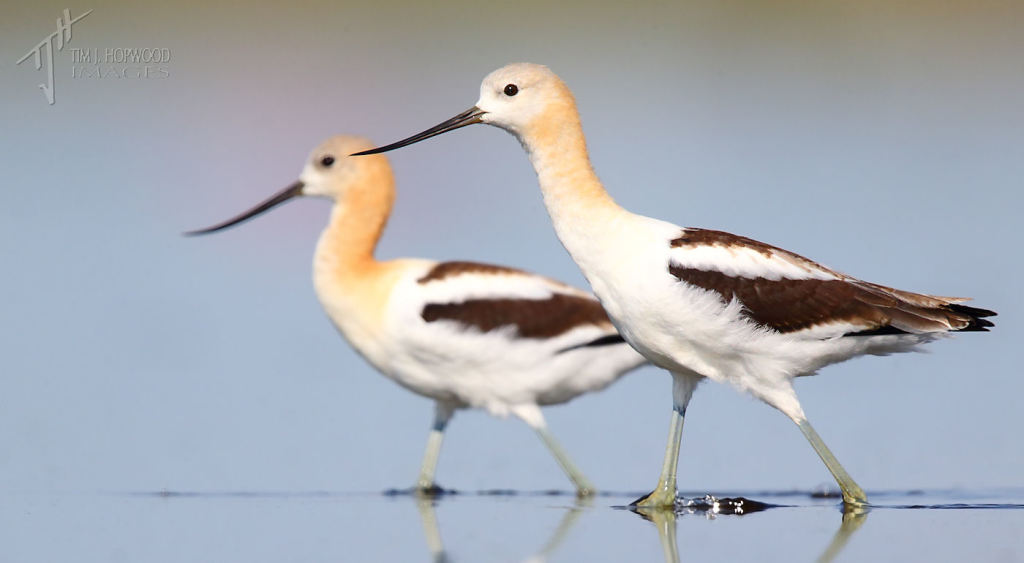
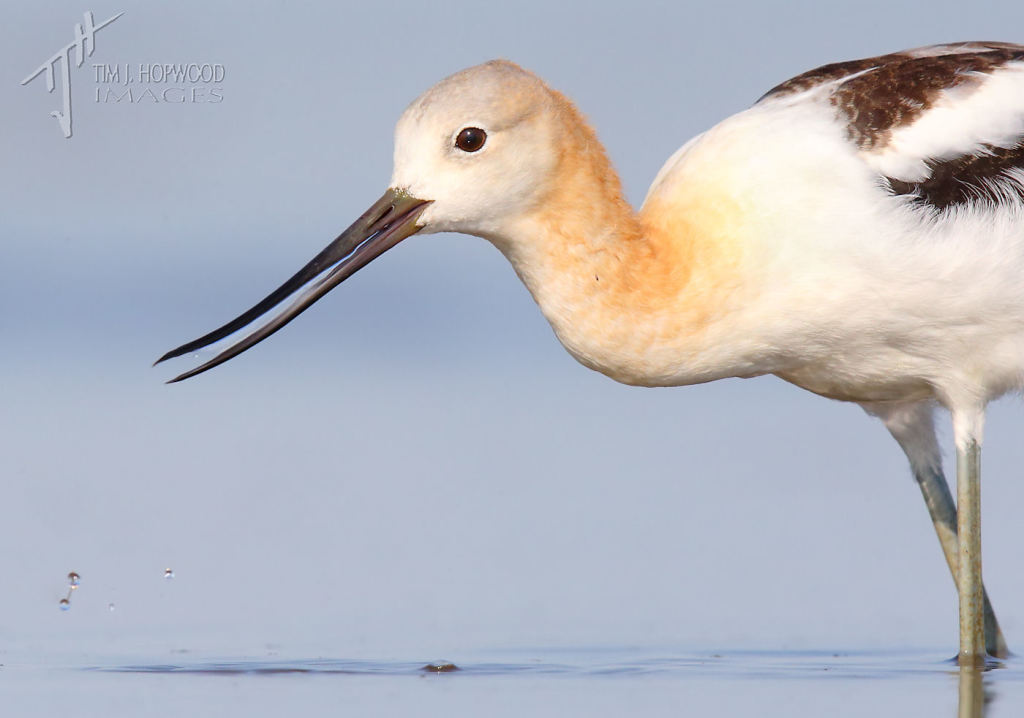
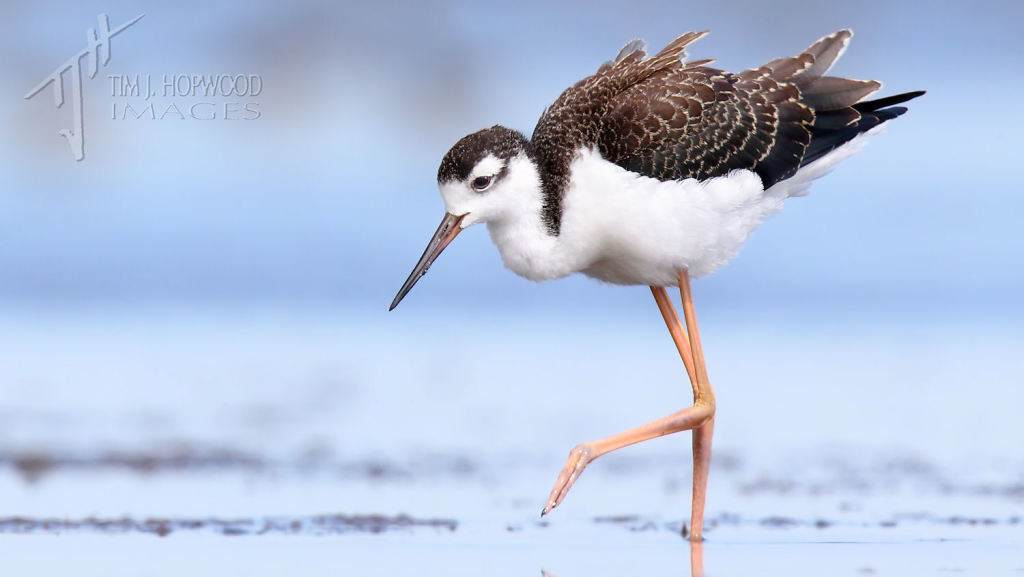
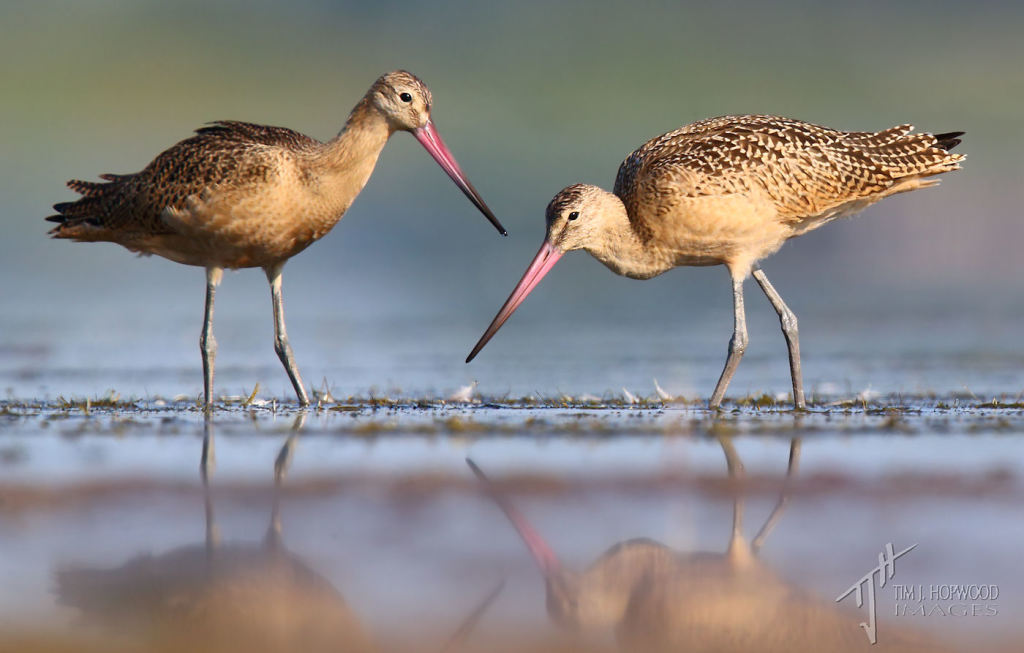
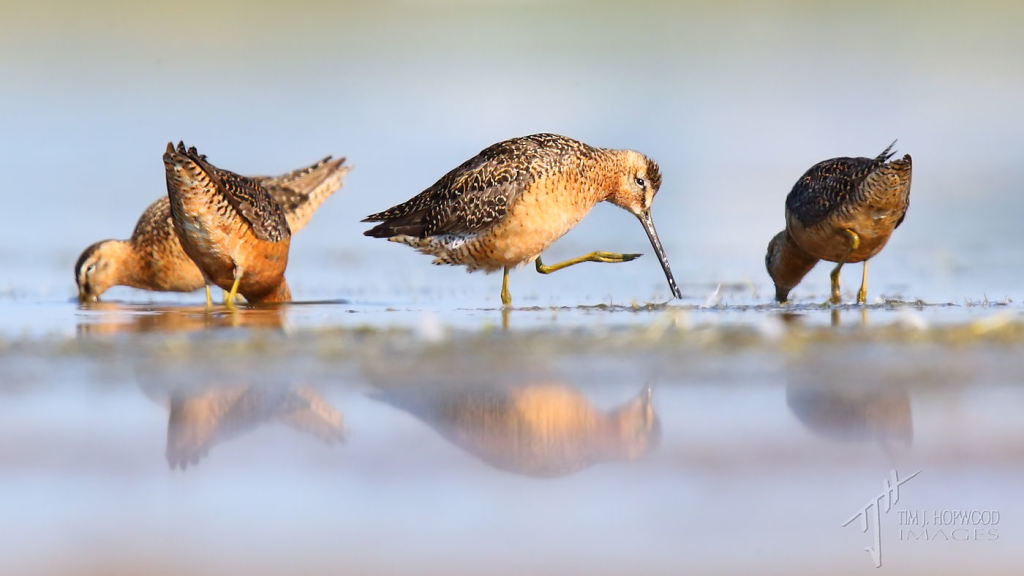
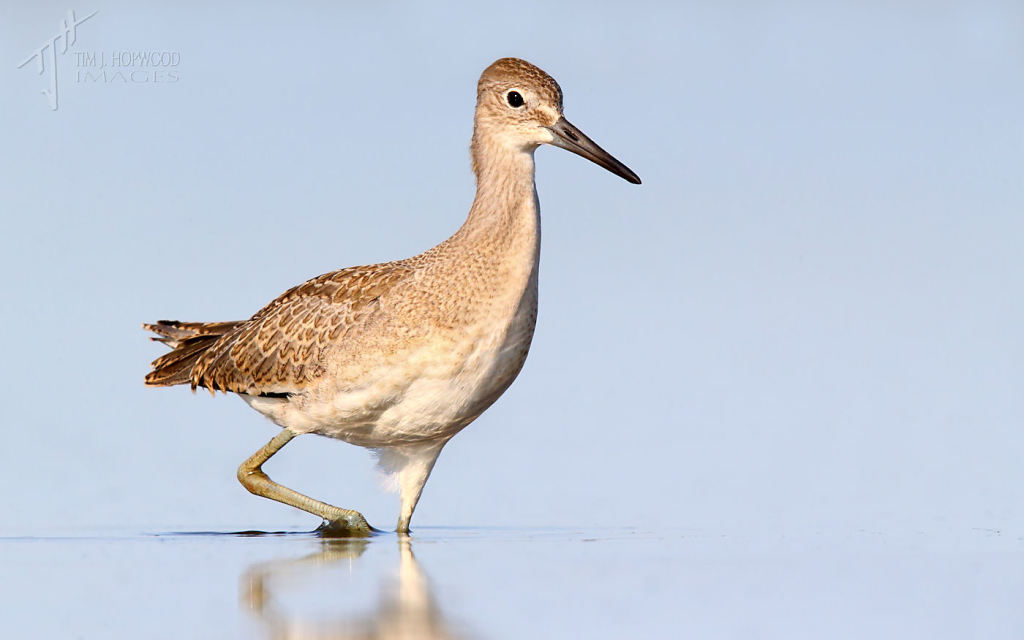
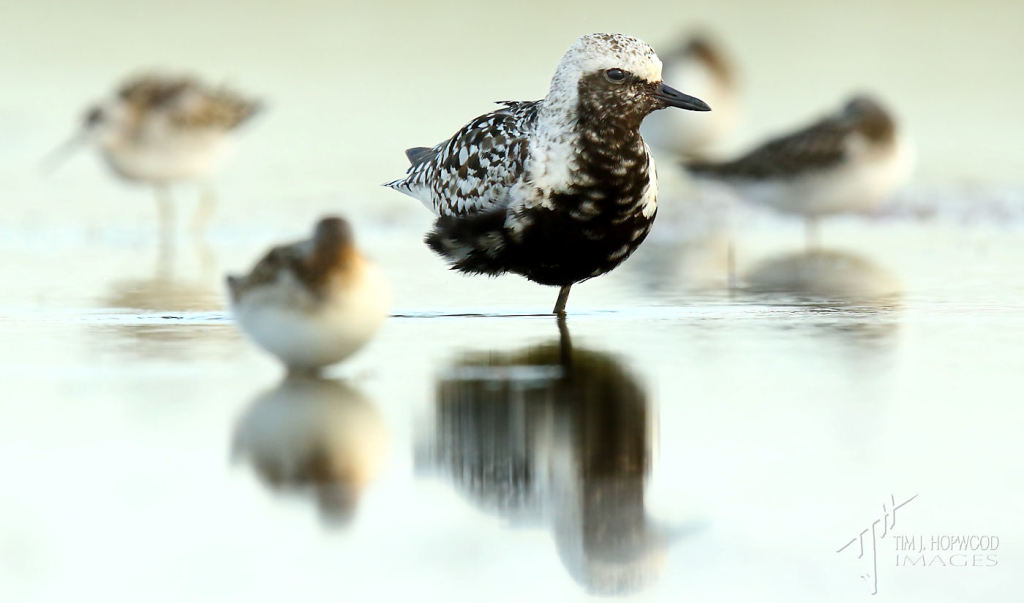
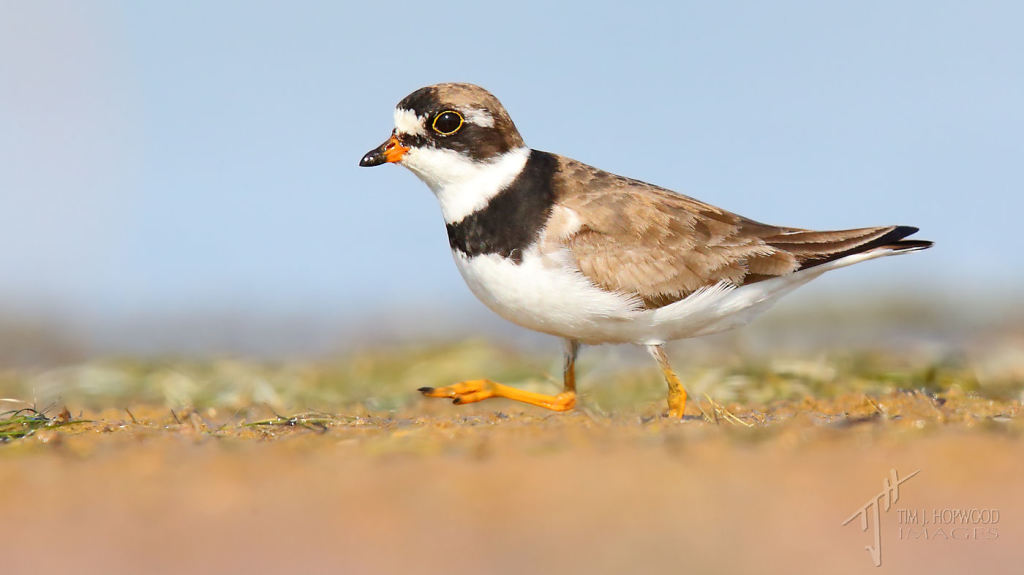
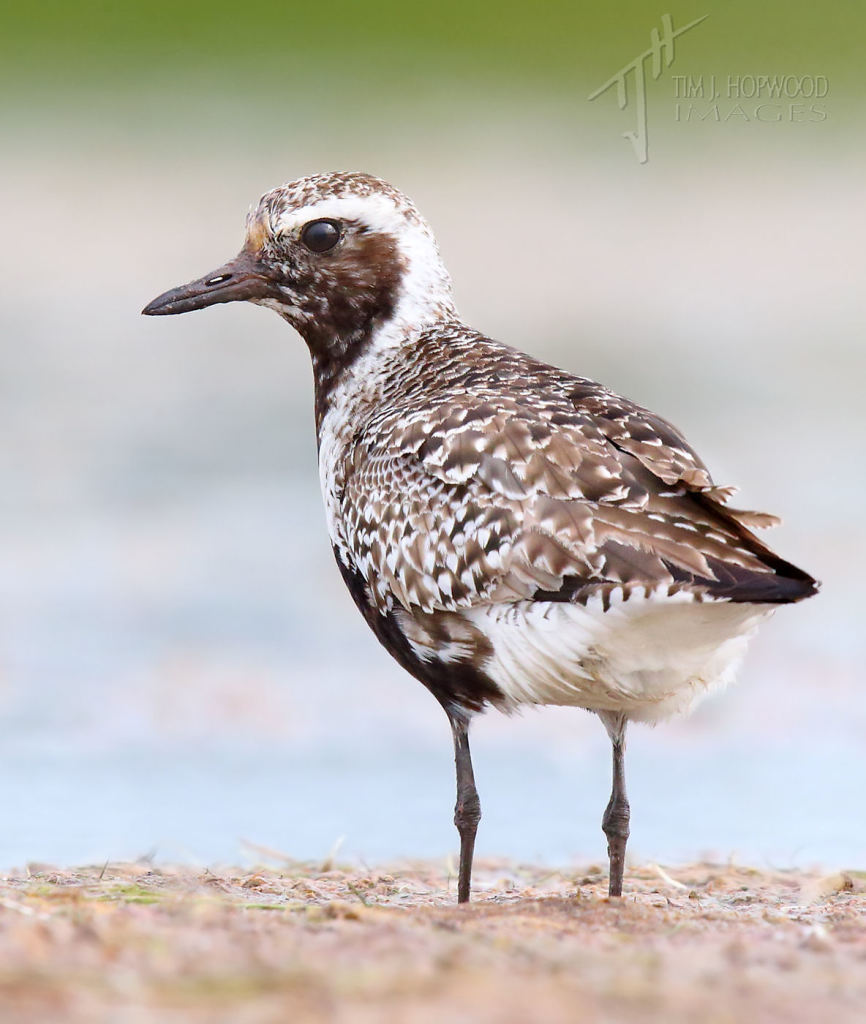
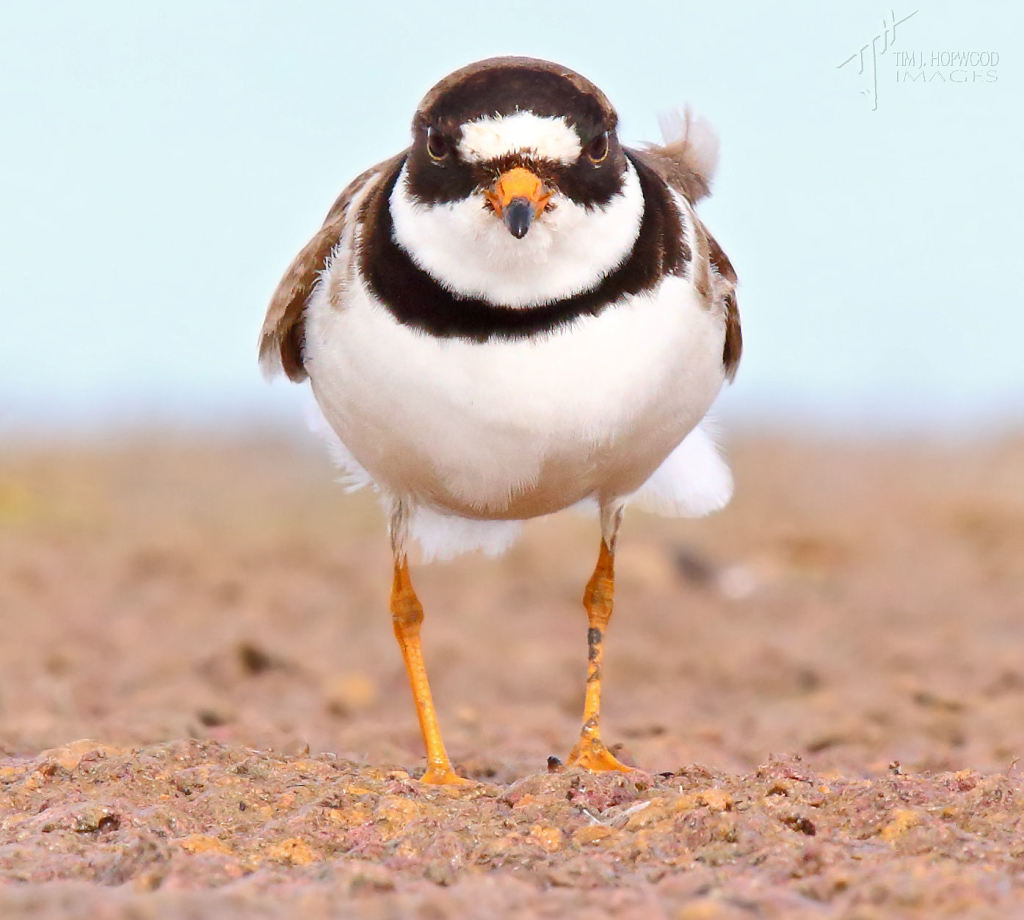
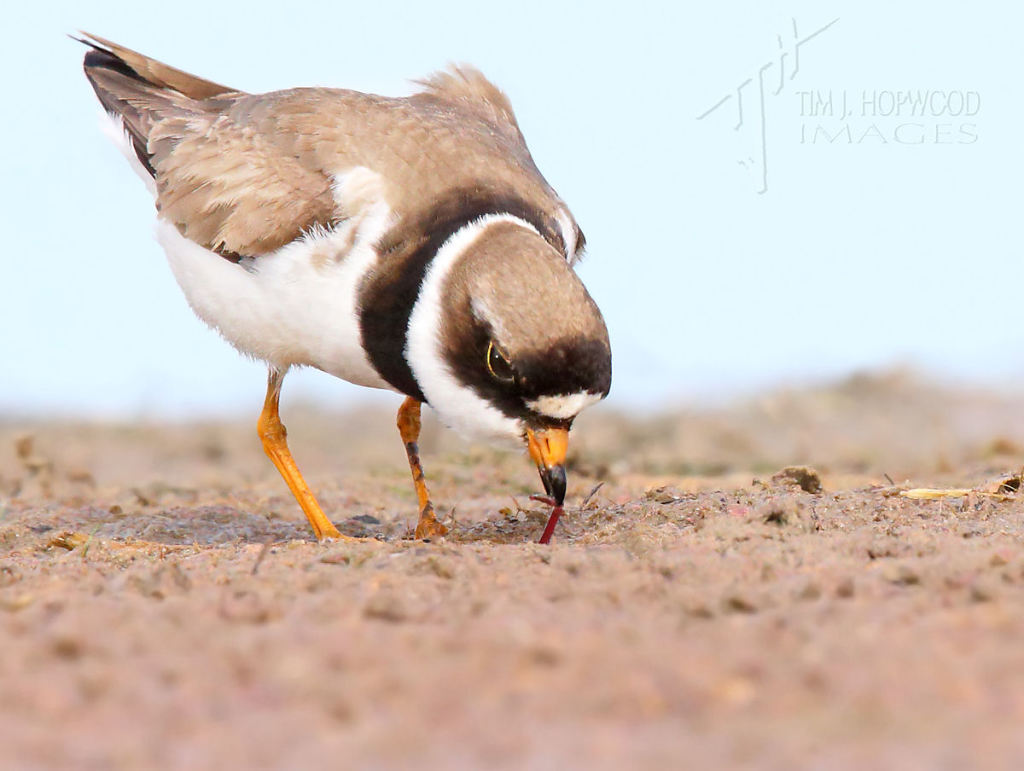
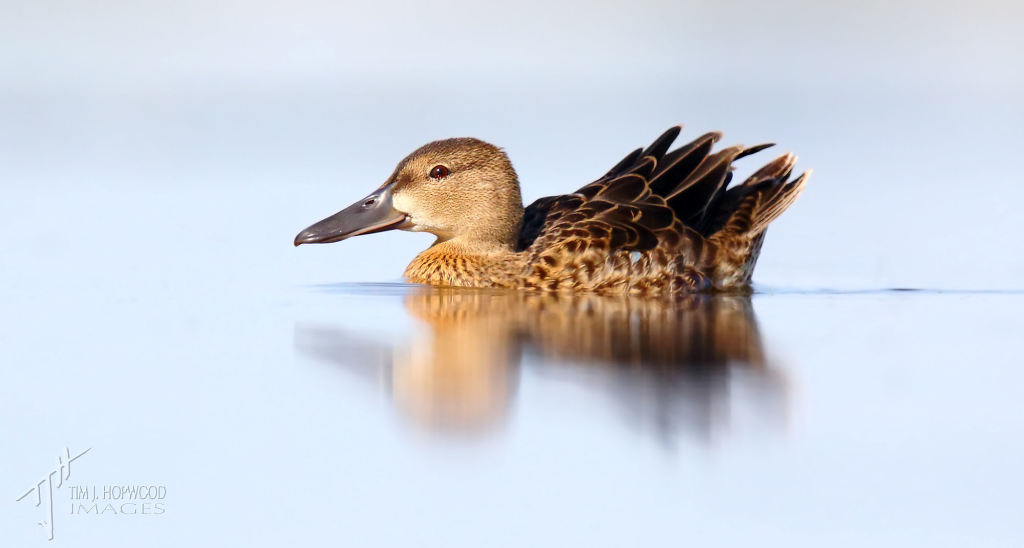
Thanks, Duane!
nice series Tim 🙂